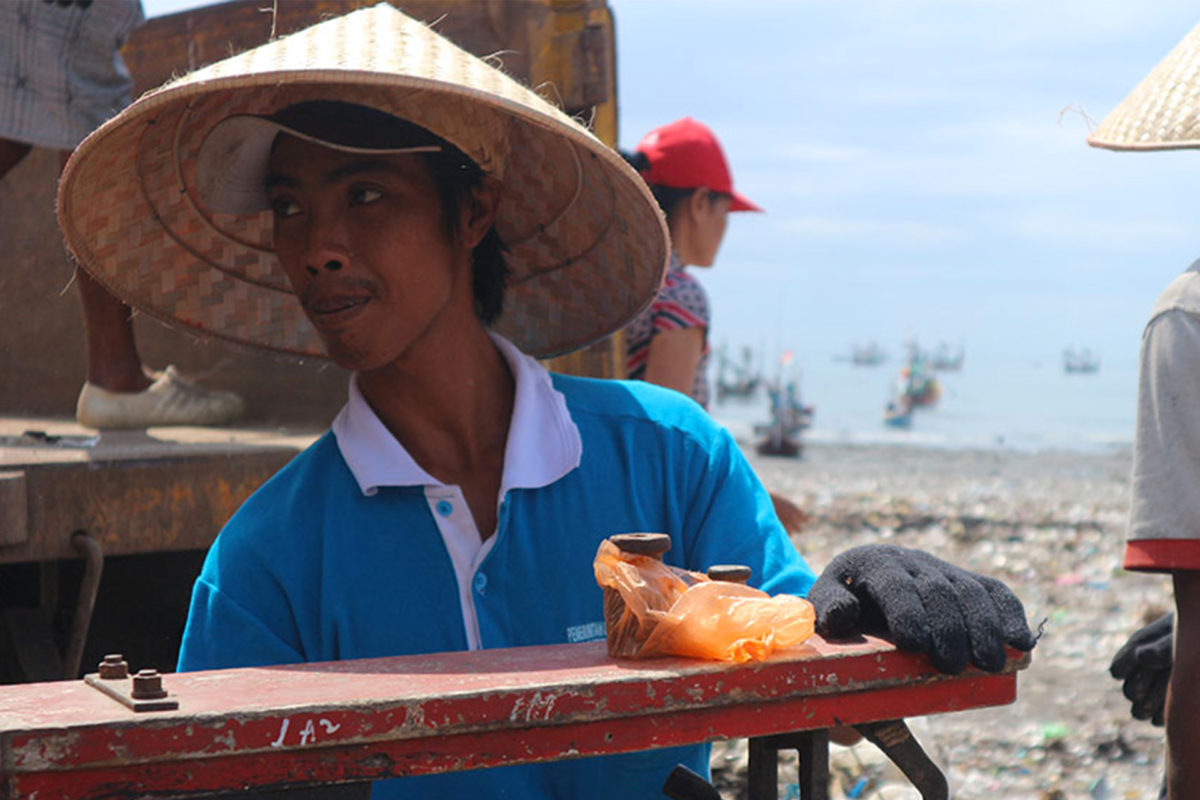Sonia Hylling: The main focus for a sustainable future is creating Net Positive impacts through disruptive innovations in design and system thinking for brands to become regenerative
UN Sustainable Development Goals
It has been a year since the foundation of the Fashion Pact – an industry-wide movement looking to align itself with the UN Sustainable Development Goals and approach sustainability issues in global supply chains across some of the world’s biggest companies like Kering, Inditex, and Prada. In its infancy, President Macron and thirty-two of the biggest fashion brands and companies focused on addressing sustainability through three key pillars: climate, biodiversity, and oceans based on Science-Based Targets (SBTs). As supply chains and companies have been affected by the pandemic, these goals have become harder to navigate. The recently published summary of the report does not mention key aspects of sustainability that stand at the core of the industry, like working with communities on regulation or immediate actionable change.
Sonia Hylling, a Circular Economy and Sustainable Supply Chain Strategist has been working on implementing sustainable supply chains in the industry for years, working with non-profit organisations like Nest and Slow Factory on building craft networks from the ground up. «I had the chance to start my career working for Chloé and Hermès in Paris – that set the standards high, in terms of quality, excellence, and respect for craftsmanship. I worked with brands like Mara Hoffman, who is involved in sustainability and artisanal work. This is where I started to familiarize myself with sustainability, the certification and what was already in place and then what was needed. Seeing the opportunity about what could be done and the kind of relationship and partnership that needed to be created to have an impact led me to work for a non-profit».
Developing individual biodiversity blueprints by 2025
The Fashion Pact 2020 review has outlined the key objectives going forward, including 25 percent of raw materials used by its signatories to lower climate impact 2030 and 100 percent renewable energy across their own operations. Their results after the one-year show that 40-45 percent of all energy consumed by their members comes from renewable sources. They have also mentioned their biodiversity and ocean efforts through developing individual biodiversity blueprints by 2025 and supporting zero deforestation and sustainable forest management.
As fashion contributes to the pollution caused by micro-plastics that come through washing clothing and improper waste techniques, the Fashion Pact looks forward to reducing signatories’ impact on the ocean through the elimination of problematic and unnecessary plastic plastics in B2C (business to customer) packaging by 2025 and B2B (business to business) by 2030. Also ensuring at least half of all plastic packaging is 100 percent recycled content by 2025 for B2C and by 2030 for B2B.
Hylling says that «The primary purpose of the Fashion Pact is to ‘build on the existing initiatives’ and aim to ‘ensure that new actions will fill the gaps across fashion supply chains’. Most of the Fashion Pact signatories are also members or strategic partners of other Sustainability groups and initiatives. They already have internal plans to reduce their negative impacts on the environment, already working together to share open-source knowledge and best practices, and they rely on data and insight from those other sustainability groups».
Shifting most consumer demand online across the globe
The aspect of CEO’s leading the Pact has meant that although decisions can be passed fast, change has been slow, further usurped by the pandemic and the problems with shifting most consumer demand online across the globe. It has meant that the impact of the lack of regulation on workers in developing countries and traceability in supply chains – have not been addressed, replaced by long-term goals that do not instigate immediate change. Hylling breaks down the aspects of the Fashion Pact that deserve more attention.
«There is a lack of specific, quantifiable targets. Aspirational objectives and voluntary based will not allow for faster and impactful change in the coming years. To reach net zero emissions by 2050 and to cut 45 % of emissions by 2030, the Fashion Pact needs to set targets to avoid and reduce scope 3 emission by 2030. The Pact acknowledges the ‘Scope 3 emissions are an established area of concern within fashion … as they lack sufficient leverage and buying power to shift energy grid systems towards renewable energy in producer countries’».
Scope 3 operations
«The 40-45 percent progress within brands’ operations (scope 1 and 2) makes unclear where the focus of the Pact is, if the focus is on the ‘first mile of the supply chain’ we would expect more in-depth efforts to incentivize the uptake of renewable energy within their Scope 3 operations’. It is also not sufficient to reduce ‘half of all plastic packaging’ as the signatories who play an active role in the Pact only account for 30 percent of the global fashion industry».
«The Pact promotes regenerative agriculture, but there is only one example [Burberry] about carbon sequestration, even though this constitutes a promising solution for reducing emissions. The Pact may not have bold enough targets to tackle the critical issues they need to solve. The SBTs for Nature (Biodiversity) being in development is expected to be set within this year and anticipates accelerating action over the next two years, raising the question of its feasibility, considering that this is a new approach for 80 percent of the members».
The issue of social inclusion in the fashion industry
Remarks of the Pact also shined a light on the issue of social inclusion in the fashion industry who is most affected by the lack of regulation through third-party contracting. Hylling says that the «supply chain holds the most significant opportunities to create positive change. The Fashion Pact focuses on a reduced portion: the environmental aspect of the ‘first mile of the supply chain’, which presents opportunities for improvement, as this is where 80 percent of the product’s impact lies. Climate change has disproportionate impacts on the world’s poorest people, which will result in severe social crises.
The Pact includes only one line about social inclusion when the social aspects of the SDGs – Sustainable Development Goals – should be as important as environmental issues and include Decent Work and Economic Growth (SDG 8), Industry Innovation and Infrastructure (SDG 9), Reduced Inequality (SDG 10). A resilient and responsible supply chain requires a holistic approach. There are three principles for successful supply chain sustainability management – governance, transparency, and engagement.
I found it surprising that only 30 percent of the Fashion Pact members report having mapped their supply chains as this is the first step in improving the impacts and management across the product’s life cycle value chain. However most importantly here, it is to enhance transformative relationships with suppliers (not just mapping the SP). There are many practical steps to improve Supply Chain – I would encourage a system change to maximize sustainable values, offer sustainable-driven product differentiation, brand respectability, regulatory influence, radical innovation, and raise a Climate Fund for further investment (note some signatories already have those in place)».
More disruptive innovations closing the loop
Hylling also notes that while partial integration of fashion and science in the Fashion Pact through material technology development like the Prada Re-Nylon campaign is decidedly beneficial, they should be implemented across the board in the ideation process of design. «The collaboration between scientists and designers (brands) is a drive for innovation and is why we see more progress now than when sustainability was first brought up 40 years ago.
First of all, it helps understand the environmental impact – conducting LCA (Life cycle analysis) to capture, measure, and improve the product’s environmental footprint. Material science and chemistry innovations have opened up the market to growth opportunities and solutions focused on developing functional coatings and finishes, providing functionality and sustainability within the apparel and textile industry. I would want to see more disruptive innovations closing the loop entirely and tackling both environmental and social issues».
The 2020 report shows that the Fashion Pact has been working with various companies like 2050 and SYSTEMIQ on climate; Conservation International on biodiversity; and (RE)SET for oceans on implanting changes in the way that its signatories work.
Fashion Pact
The Fashion Pact is a global initiative of companies in the fashion and textile industry (ready-to-wear, sport, lifestyle and luxury) including their suppliers and distributors, all committed to a common core of key environmental goals in three areas: stopping global warming, restoring biodiversity and protecting the oceans. Launched as a mission given to Kering Chairman and CEO, François-Henri Pinault by French President, Emmanuel Macron, the Fashion Pact was presented to Heads of State at the G7 Summit in Biarritz.




















